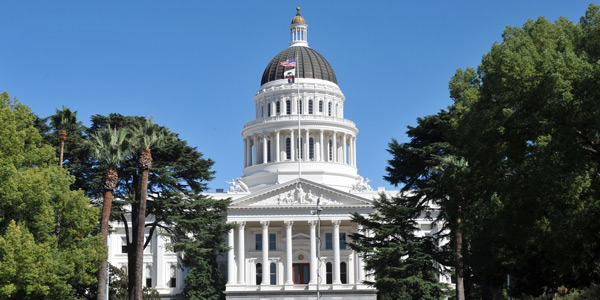By Jason Fordney
SACRAMENTO, Calif. — California lawmakers on Wednesday expressed concerns that expanding CAISO into a regional grid operator would result in higher electric bills, job losses and the export of energy development to other states.
Members of the Assembly Committee on Utilities and Energy did not appear to reach conclusions during a June 7 hearing, but they did ask detailed questions of representatives of CAISO, public interest groups and power companies.
Chairman Chris Holden, a Democrat, called the hearing to gather information about whether the expansion is necessary and provides the least-cost alternative to meeting the state’s aggressive renewable mandates.
The 2015 Clean Energy and Pollution Reduction Act, which established the state’s 50% by 2030 renewable portfolio standard, also directed the state’s energy agencies to explore transforming CAISO into a regional entity to help meet the RPS target. More recently, the State Senate passed a bill setting a 100% renewable goal by 2045. (See California Senate Passes Bill Mandating 100% RPS.)
There is consensus between the legislature, CAISO and other stakeholders that expansion would have benefits, including enabling California to export its periodic oversupply of renewable generation and reducing the costs of curtailing output. CAISO cites its finding that regionalization would save electricity customers up to $1.5 billion annually by 2030. (See Study Touts Benefit of CAISO Expansion.)
But public interest groups have urged the state to go slow on the initiative, and skeptics challenged some of the study’s findings. (See CAISO Expansion in Question as EIM Grows.) Lawmakers wanted to know what the trade-off is for California consumers.
At the hearing, Republican Assemblyman Brian Dahle said he did not think the legislature had adequately studied the consequences of the “arbitrary” goal in the state’s RPS. He mentioned the costs associated with renewable curtailment and high electricity bills.
“I want to figure that out, and I don’t want to continue to have more solar if I don’t need it in the middle of the day” in some parts of the state, Dahle said. He also expressed concern about the loss of California jobs from regionalization.
This year, CAISO has curtailed about 2.6% of potential solar generation and 1.3% of renewables. But that amount could grow 10-fold and become a very costly problem, CAISO Vice President of Market and Infrastructure Development Keith Casey said. The state is well on its way to meeting a 33% RPS by 2020.
“The solution is to take a holistic approach to meeting the RPS mandate,” Casey told Dahle. That means factoring in the cost of curtailment and the differing costs of renewable resources that are used to meet the RPS.
There are abundant wind and geothermal resources in neighboring states that can be developed cheaply and support out-of-state jobs, but importing low-cost power also has an indirect stimulus on jobs in California, Casey said.
“The bottom line is there is no silver bullet here,” Casey said, asserting that California is leading the world in integrating renewables. Officials in Asia, Africa and South America visit the ISO almost weekly to study the state’s effort.
“Some of this isn’t new at all,” said Jan Smutny-Jones, CEO of the Independent Energy Producers Association, which represents owners and operators of renewable, natural gas, energy storage and demand response resources. California has been involved in a Western energy market in some form for 60 years, but it could be made to work better, he said. Regionalization could reduce costs and create market opportunities.
“Our interest, quite candidly is that we want to grow that market, and we don’t think we can grow that market here in California, assuming you can get stuff sited,” Smutny-Jones said.
CAISO said its goals are to preserve state authority, transparently track greenhouse gas emissions and retain the ability of state representatives to direct policy. But Gov. Jerry Brown has heeded the concerns expressed by some, directing state agencies to take more time to develop a proposal. (See Governor Delays CAISO Regionalization Effort.)
After a pause last summer, the momentum toward regionalization of CAISO may be resuming, but the June 7 hearing indicates there will be careful scrutiny as to whether the negatives outweigh the positives for the state’s consumers and businesses.





